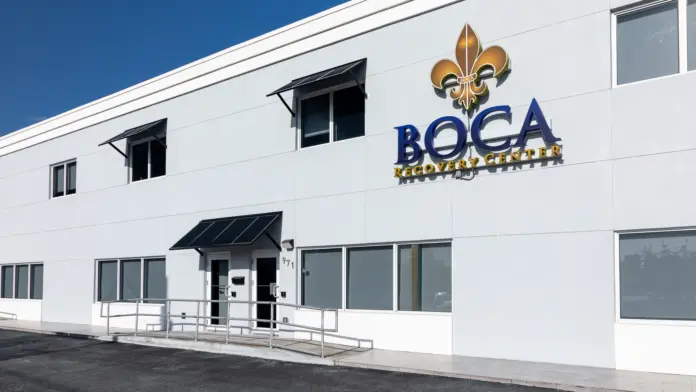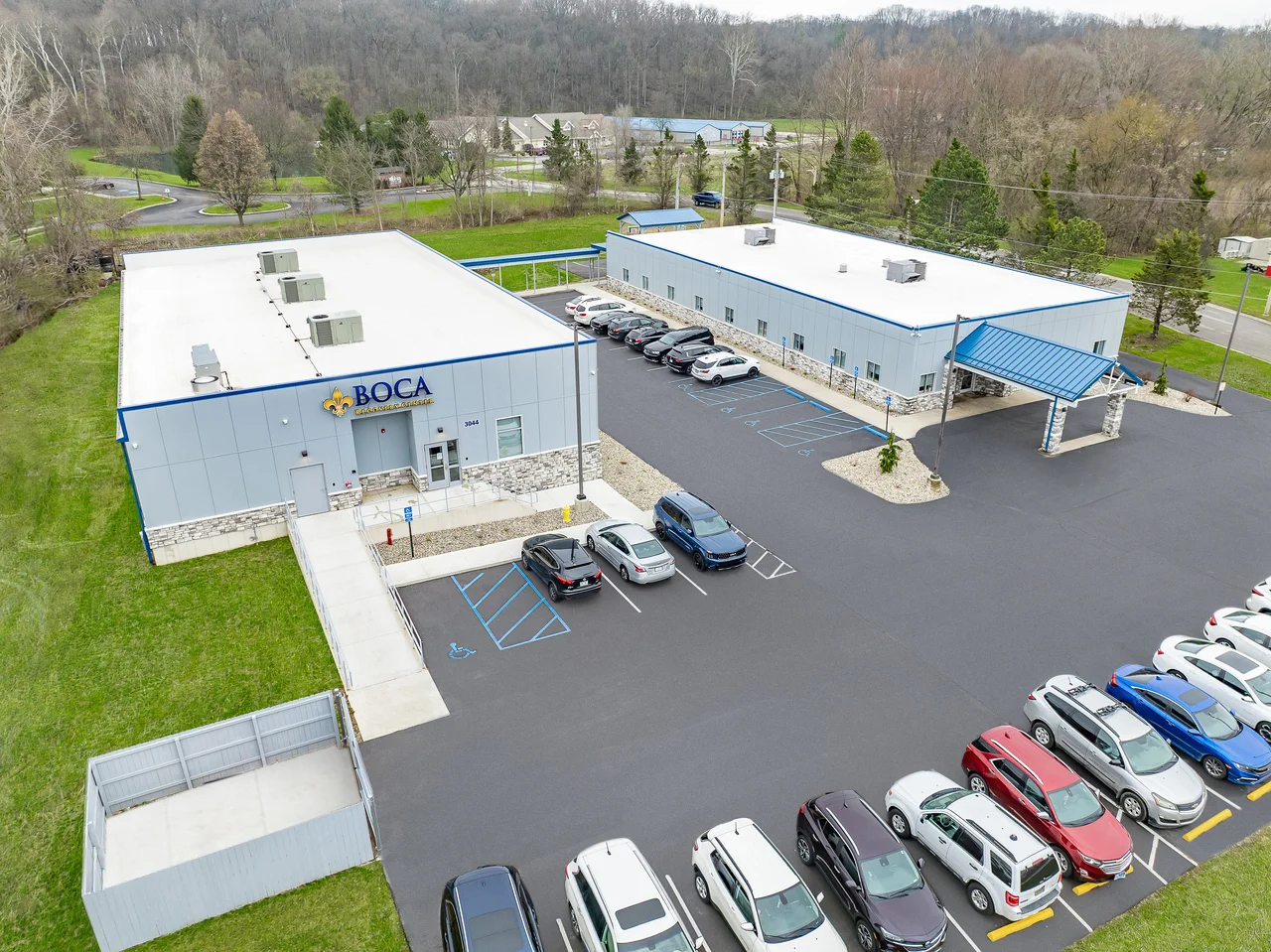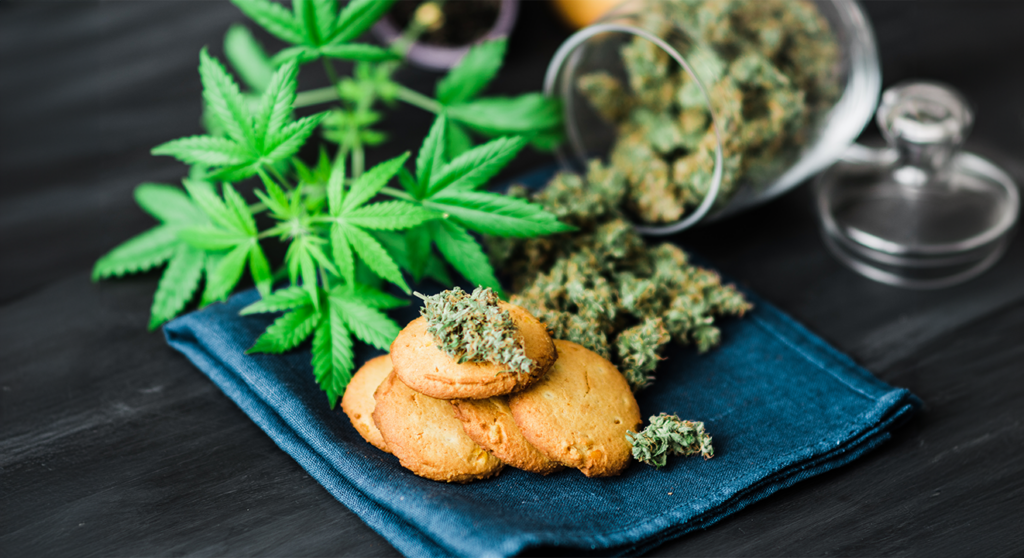
Several factors influence how long edibles stay in your system, including cannabinoids, THC levels, and your frequency of cannabis use.
Need support to overcome marijuana dependence? We’re here to help. Check out our Indiana drug detox center for support.
Edibles can begin to affect you within an hour and may last up to eight hours, with THC traces detectable for up to 90 days. Understanding the psychoactive effects of marijuana edibles and managing your intake is crucial, especially for those concerned about overconsumption and its impact on mental health.
Starting with a low dose and being patient is important, as the effects can take time to manifest. Avoid consuming more if you don’t feel the effects immediately, and be mindful of how frequently you use cannabis to prevent tolerance buildup. Recognizing these factors can help you manage intake responsibly and minimize potential risks.
The Timeline of Cannabis Edibles
Are you or someone you know struggling with addiction?
I may have a problem I am concerned for a loved oneWhile many people smoke cannabis and are accustomed to feeling the effects of the drug right away, taking a marijuana edible is a longer, more drawn-out process.
When you consume an edible, it travels through your digestive system where it’s broken down. The THC is then metabolized in the liver, converting into 11-hydroxy-THC, a compound known for its potent psychoactive effects. This metabolic process, combined with the slower digestion of solid food products like brownies, gummies, and candies, means the onset of effects is delayed.
First, you will begin to feel the effects of an edible 30 to 60 minutes after taking it. The highest levels of THC in your blood are recorded between 1 to 3 hours after ingesting a marijuana edible. However, the effects can last from 6 to 8 hours, varying based on factors such as your metabolism rate, the type of food product consumed, and your individual digestive system.
Different edibles can have different absorption rates. For instance:
- Gummies and candies: These dissolve quickly in the digestive system, leading to a faster onset of effects.
- Brownies and other baked goods: These take longer to break down, leading to a slower, more prolonged release of THC.
Understanding these differences can help you manage your intake and anticipate the effects more accurately.
When Will You Feel the Impact of Edibles?
After you take oral cannabis, the drug travels to the liver. The active ingredient (delta-9 THC) in marijuana is processed into the chemical 11-OH-THC, which is psychoactive. This conversion means the liver must metabolize the drug before you begin to feel high, which can delay the onset of effects.
The psychoactive effect of edibles can vary significantly based on the form of THC and the dose consumed. Higher doses of edibles lead to more intense and prolonged effects. Delta-9 THC, present in the original edible form, is less potent than 11-hydroxy-THC, which is produced during digestion and responsible for the stronger psychoactive experience.
Your mind can also play tricks on you. For example, in a study of 20 people, researchers told the participants they were taking cannabis products with a high level of THC. Instead, every person got a sugary snack. Most people reported at least some intoxication, even though they took no drugs at all.
However, when you consume an active dose of edibles, you can expect to feel the impact within about 30 to 60 minutes. The exact timing and intensity depend on various factors, including the THC levels, the form of THC, and individual differences in metabolism and tolerance.
The Role of Different Cannabinoids
Cannabinoids are the active compounds found in cannabis, and they play a significant role in the effects of edibles on the body. The most well-known cannabinoids include THC (tetrahydrocannabinol), CBD (cannabidiol), and delta-9 THC.
Each of these cannabinoids interacts with the body’s endocannabinoid system differently, leading to varied effects.
- THC (Tetrahydrocannabinol): THC is the primary psychoactive compound in cannabis, responsible for the “high” associated with marijuana use. In edibles, THC is metabolized by the liver into 11-hydroxy-THC, which is more potent and has a longer-lasting effect compared to when THC is inhaled. This transformation results in the intense and prolonged psychoactive effects that edibles are known for.
- Delta-9 THC: Delta-9 THC is the form of THC found in cannabis plants. When consumed through smoking or vaping, delta-9 THC quickly enters the bloodstream and produces immediate effects. In edibles, however, delta-9 THC is converted into 11-hydroxy-THC during digestion, which is why the onset of effects is delayed but more intense.
- CBD (Cannabidiol): CBD is a non-psychoactive cannabinoid known for its potential therapeutic benefits, including reducing anxiety, inflammation, and pain. In edibles, CBD can help counterbalance the psychoactive effects of THC, providing a more balanced and manageable experience. CBD does not produce a high, making it a popular choice for those seeking the medicinal benefits of cannabis without the intoxicating effects.
- The interaction of cannabinoids: When edibles contain both THC and CBD, the cannabinoids can work synergistically, enhancing each other’s effects. This interaction is known as the “entourage effect.” For instance, CBD can modulate the psychoactive effects of THC, making the overall experience more tolerable and potentially reducing anxiety or paranoia that high doses of THC might induce.
Whether seeking the psychoactive effects of THC or the therapeutic benefits of CBD, being informed about how these cannabinoids work can help users make more informed decisions about their consumption.
Factors That Affect the Timeline
While some generalizations can be made, it’s important to note that a multitude of factors may affect how long edibles stay in your system. The number of milligrams of THC you consume is a main factor, but individual differences also affect the overall experience and detection window.
Individual Factors
- BMI: Your Body Mass Index (BMI) and overall body mass influence how THC is stored and metabolized. THC is fat-soluble, meaning it is stored in fat cells. Individuals with higher body fat percentages may retain THC metabolites longer, extending the detection window.
- Metabolism rate: Your metabolic rate affects how quickly your body processes and eliminates THC. A faster metabolism can shorten the length of time THC stays in your system, while a slower metabolism can prolong it.
- Height, age, and weight: These factors can affect how edibles are absorbed and processed. For instance, older individuals or those with a slower metabolism may experience longer-lasting effects.
- Frequency of use: Regular cannabis users may have built-up THC levels in their bodies, which can extend the detection window. Frequent use leads to accumulation in fat cells, making it detectable for longer periods.
- Tolerance: Individuals who frequently consume marijuana may develop a tolerance, requiring higher doses to achieve the same effects. This can also impact how long THC stays in their system.
Because the effects of marijuana edibles take longer to kick in, some people may be inclined to take a second dose after the first one. Given that the peak effects of edibles can take hours to reach, it is unwise to take another dose prematurely, as you may still be experiencing the initial dose’s effects.
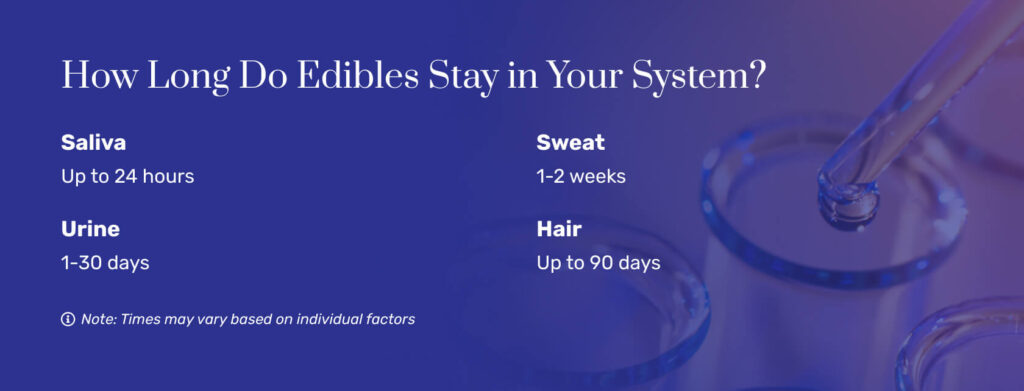
How Long Does THC From Edibles Remain in Your Body?
Traces of THC from edibles can remain in your body for far longer than the effects of a marijuana edible last. In fact, traces of THC can remain in your body for 90 days.
Struggling with Marijuana Addiction? Get started today
Different types of drug tests are used to detect the presence of cannabis in the body. Each type of test can detect the presence of THC for varying amounts of time. The estimates listed below come from a drug testing company:
- Saliva tests: These tests can detect THC metabolites for about 24 hours after cannabis use. They’re often used for their convenience and quick detection window.
- Urine tests: One of the most common forms of drug testing, urine tests can detect cannabis remnants for up to three days in occasional users and up to six weeks in heavy users. The detection window can vary based on the frequency and amount of cannabis use.
- Hair tests: Hair follicle tests have the longest detection window, as THC metabolites are incorporated into the hair shaft. THC can be detected up to 90 days after the last ingestion of an edible. This method is used for its ability to provide a long-term view of cannabis use patterns.
- Blood tests: Blood tests can detect THC for up to seven days after the last use. They are typically used in situations requiring recent use detection, such as in accidents or impairment assessments.
Now let’s look at the influence of cannabis use patterns on detection times:
- Occasional users: For those who use cannabis infrequently, THC metabolites may clear out of their system more quickly. The detection times are generally shorter, with urine tests showing positive results for a few days.
- Regular users: Frequent cannabis users may have prolonged detection windows due to the accumulation of THC metabolites in the body. Regular use leads to higher THC levels and longer retention times, as THC is stored in fat cells and gradually released back into the bloodstream.
- Heavy users: Individuals who consume cannabis heavily may test positive for THC metabolites for several weeks to months, as the high levels of THC are slowly metabolized and excreted.
Being aware of how different drug tests detect THC and how cannabis use patterns affect detection times can help users manage intake and anticipate the duration of THC presence in the body.
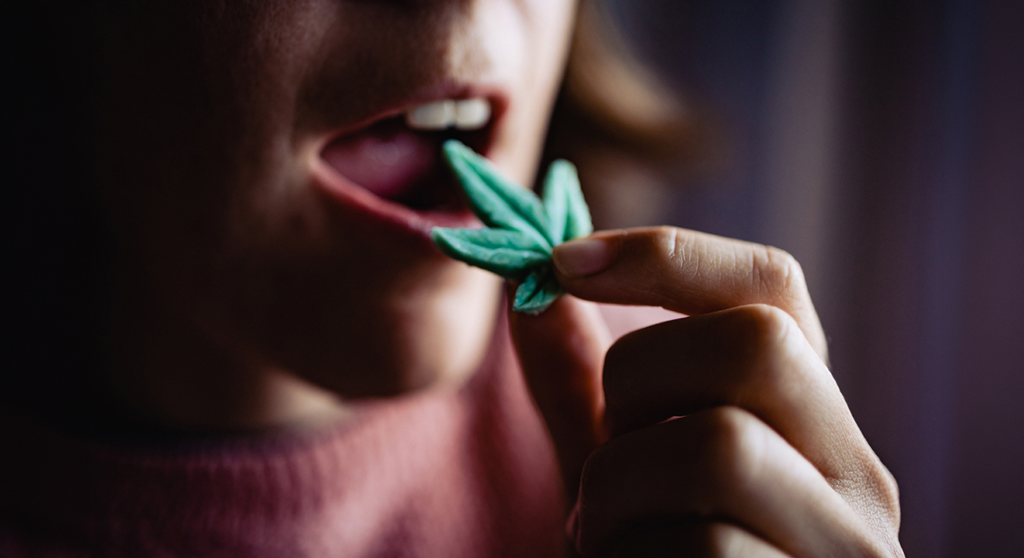
What About Drug Tolerance?
Drug tolerance is typically defined as the need to take bigger doses of drugs to get the results that a smaller dose once delivered. In 2018, researchers examined all published studies on the topic and found that the acute effects of a single dose are less prominent in those who use the drug regularly. In other words, repeat users can (and do) develop tolerance.
The frequency of marijuana use greatly affects the development of tolerance. Those who use cannabis daily or multiple times a week are more likely to develop tolerance quickly compared to occasional users. As a result, they may experience diminished effects from the same dose that once produced a significant high.
Researchers say that long-time, regular users need longer to process all of the marijuana out of their systems. While the half-life of marijuana in irregular users is approximately 1.3 days, it extends to between five and 13 days for frequent users. This prolonged presence is due to the redistribution of stored THC from fat cells back into the bloodstream over time.
Understanding tolerance is important for managing marijuana use effectively. Those experiencing tolerance might consider taking breaks from use to reset their body’s responsiveness to THC. This practice, often referred to as a “tolerance break,” can help reduce the amount needed to achieve the desired effects.
By recognizing how tolerance develops and its impact on THC levels and the frequency of use, individuals can make more informed decisions about their marijuana consumption and manage their use more responsibly.
Effects of Edible Cannabis on Mental Health
Edible cannabis can have significant effects on mental health, which can vary depending on the THC levels and the presence of other cannabinoids like CBD. While some individuals may use edible cannabis for its therapeutic benefits, it’s essential to be aware of the potential side effects of THC and the risk of overconsumption.
Impact on Mental Health
- Positive effects: Some people use edible cannabis to alleviate symptoms of anxiety, depression, and chronic pain, thanks to the presence of CBD, which has calming properties.
- Negative effects: High THC levels can lead to anxiety, paranoia, and impaired judgment. Overconsumption, in particular, can exacerbate these negative effects and may result in panic attacks or severe anxiety.
Potential Side Effects
- Short-term: Edible cannabis can cause dizziness, dry mouth, altered perception, and cognitive impairment. These side effects are usually temporary but can be distressing, especially for first-time users.
- Long-term: Prolonged use of high-THC edibles may contribute to mental health issues such as depression or anxiety. Regular consumption can also lead to dependency, requiring addiction treatment.
Risk of Overconsumption
- Slow onset: The delayed onset of edibles can lead to overconsumption as individuals may consume more before feeling the initial effects. This can result in an unexpectedly intense and prolonged high.
- High doses: Consuming higher doses of THC can increase the risk of severe side effects and mental health challenges.
Understanding the potential mental health effects of edible cannabis and the importance of responsible use can help mitigate risks and promote safer consumption practices.
Managing Intake and Avoiding Overconsumption
Properly managing your intake of edible cannabis is essential to avoid overconsumption and minimize the risk of impairment. Here are some practical tips and advice for those who might be new to edibles:
Practical Tips
- Start low and go slow: Begin with a low dose of THC, typically around 2.5 to 5 mg, and wait at least two hours before considering another dose. This approach helps prevent overconsumption.
- Read labels: Pay attention to the THC content on edible packaging to understand the potency and avoid higher doses than intended.
- Set a limit: Determine the maximum amount of THC you will consume in one session to help manage intake effectively.
Recognizing Signs of Overconsumption
- Physical symptoms: Nausea, vomiting, dizziness, and extreme drowsiness are common signs of overconsumption.
- Mental symptoms: Anxiety, paranoia, confusion, and hallucinations can indicate that you have consumed too much THC.
Understanding Impairment Risks
- Delayed effects: Remember that the effects of edibles take longer to set in compared to smoking or vaping. Be patient and avoid consuming more edibles too quickly.
- Safety precautions: Avoid activities that require full cognitive function, such as driving or operating heavy machinery, while under the influence of edibles.
By following these guidelines and being mindful of the risks, you can enjoy edible cannabis responsibly and minimize the chances of overconsumption.
Detox and Recovery
Detoxing from marijuana and recovering from addiction involves a combination of strategies, support from treatment centers, and understanding the influence of marijuana use on substance abuse recovery.
Staying hydrated and maintaining a balanced diet can help flush THC metabolites from your system. Regular physical activity can speed up metabolism and aid in the elimination of THC stored in fat cells. Ensuring adequate sleep is crucial for the body to recover and detoxify effectively.
Treatment centers offer structured programs that include counseling, medical supervision, and support groups, which are essential for effective marijuana addiction treatment. Cognitive behavioral therapy (CBT) and other therapeutic approaches can help address underlying issues related to substance abuse and provide coping strategies for recovery.
Offering emotional support and encouraging your loved one to seek professional help is vital. Understanding and patience are key during this challenging time. Learn about addiction treatment options and share this information with your loved one to help them make informed decisions about their recovery journey.
Regular marijuana use can complicate addiction treatment for other substances, making it crucial to address marijuana use as part of a comprehensive treatment plan. Effective addiction treatment should consider all aspects of substance abuse, including marijuana use, to ensure a thorough and sustainable recovery.
Detoxing and recovering from marijuana addiction is a multifaceted process that requires a combination of personal effort, professional support, and understanding from loved ones. By utilizing available resources and strategies, individuals can successfully navigate their path to recovery.

Managing Edible Cannabis Intake and Understanding Its Duration in Your System
Edible cannabis can remain in your system for an extended period, with effects lasting up to eight hours and traces of THC detectable for up to 90 days. Responsible consumption helps users avoid overconsumption and its associated risks, such as mental health challenges and impaired judgment.
If you or a loved one is struggling with substance abuse, seeking professional help is vital. Boca Recovery Center offers comprehensive addiction treatment programs designed to support recovery and promote long-term health. Contact Boca Recovery Center today to take the first step toward a healthier, addiction-free life. Long-term recovery support is also available through our New Jersey inpatient drug rehab center, where therapy and education programs help individuals maintain sobriety after detox.
- Chemistry, Metabolism, and Toxicology of Cannabis: Clinical Implications. (Fall 2012). Iranian Journal of Psychiatry.
- Pharmacokinetic Profile of Oral Cannabis in Humans: Blood and Oral Fluid Disposition and Relation to Pharmacodynamic Outcomes. (March 2017). Journal of Analytical Toxicology.
- Objective Testing - Urine and Other Drug Tests. (March 2016). Child and Adolescent Psychiatric Clinics of North America.
- Tasty THC: Promises and Challenges of Cannabis Edibles. (January 2017). RTI Press.
- The Evolving Landscape of Cannabis Edibles. (August 2019). Current Opinion in Food Science.
- Mechanisms of Action and Pharmacokinetics of Cannabis. (November 2020). The Permanente Journal.
- Placebo Effects of Edible Cannabis: Reported Intoxication Effects at a 30-Minute Delay. (May 2017). Journal of Psychoactive Drugs.
- Cannabis Use and the Development of Tolerance: A Systematic Review of Human Evidence. (July 2018). Neuroscience and Biobehavioral Reviews.
- Chemistry, Metabolism, and Toxicology of Cannabis: Clinical Implications. (Fall 2012). Iranian Journal of Psychiatry.
- A Genetic Difference in THC Metabolism May Explain Why Some Young Adults Have Negative Experiences with Cannabis. (March 2024). Medical University of South Carolina.
- Marijuana (THC) Testing. (September 2022). Testing.



